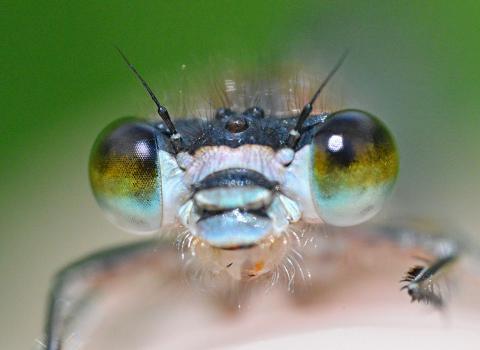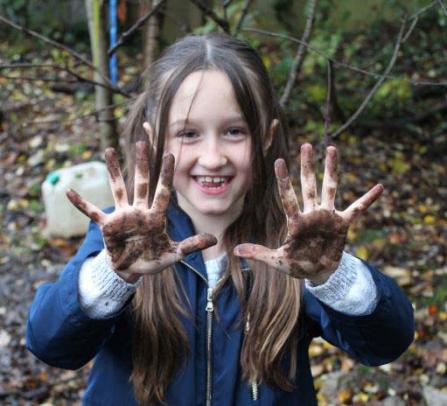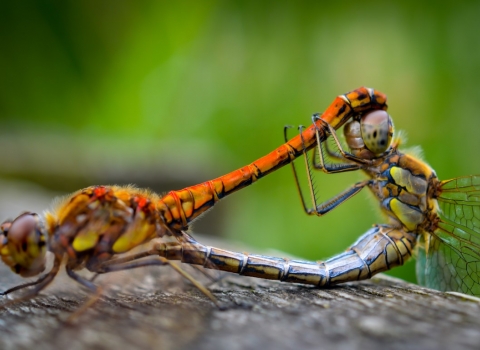How we make decisions
As a scientific organisation all of our decision making is underlined by the scientific method: asking a question, conducting research, analysing the data and reporting these results.
Across our nature reserves we carry out conservation science by implementing a five-year management plan on each reserve, which is reviewed and updated on a regular basis.
We also follow Lawton's: Making Space for Nature (2010) ethos, which states that we must work together focusing on landscape-scale conservation; providing bigger, better and more joined up ecological networks for wildlife to survive the changing climate. This includes improving the condition of essential stepping stone habitats between core nature reserves.
Any decisions made are overseen by the Conservation Committee - a team of highly qualified experts in wildlife conservation - using both their knowledge and evidence to move forward on any decisions the Trust makes.
Anything from purchasing land to habitat management, to supporting a specific campaign is governed through our clear and legitimate process of decision making. This is something we pride ourselves on as a scientific wildlife conservation organisation.
Research we're currently undertaking
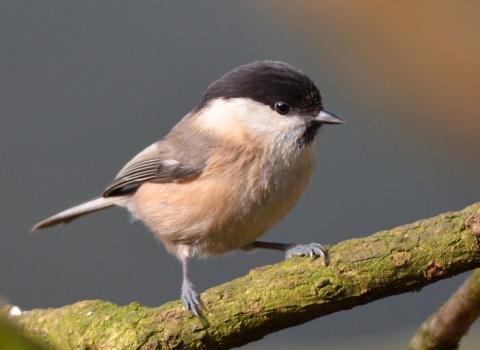
Willow tit by Adam Jones
Saving the UK's smallest endangered bird
Find out how we're working to save the willow tit - the UK's most endangered bird. We have a thriving population in Wigan Flashes, and are working together with local partners to connect riverine habitats and promote nesting spots.
How Forest School is shaping young people
We're working with University College London and The Wildlife Trusts to find out how our Forest School project is shaping children's minds and changing their connection with nature. Focusing on engaging urbanised children, our Forest School project currently runs across Manchester and Liverpool and is funded by players of the People's Postcode Lottery. We've been conducting questionnaires to look at how our project is helping to improve children's resilience, confidence and knowledge of wildlife.

(c) Simon Caporn
Restoring the Salford mosslands
We are lucky enough to have some of the greatest lowland peatland bogs in the world right on our doorstep. As carbon stores, potential flood protection and refuges for threatened plants and animals, it is essential they are protected and restored. We're currently working with Anna Keightley, a PhD student at Manchester Metropolitan University, who is researching carbon greenhouse gas fluxes on degraded bogs throughout the restoration process. The results will hopefully determine whether Cadishead Moss is currently acting as a carbon source or sink. She is also studying the optimum conditions and mixes for growing sphagnum moss.
Research we've been involved with
We've been involved with a number of different research projects at all levels, from collecting data on the ground to actively carrying out research alongside research institutes. Read a number of these findings below.
Utilisation of the urban environment by the Eurasian red squirrel (Sciurus vulgaris) (2018)
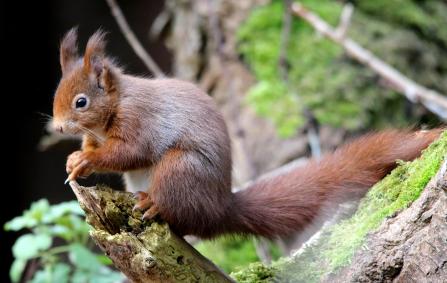
(c) Karen Lonsdale
We are currently working with Nottingham Trent University, with a PhD student, Katherine Finglan and her supervisors Samanthat Bremner-Harrison, Samantha Ward, Andy Bates and Craig Shuttleworth.
This research is focused on understanding how red squirrels use the urban environment and the influence this has on their ecology. This research will be pivotal in devising a beneficial conservation strategy. This research is conducted part time with an aim to finish in 2021.
Engaging People with Carbon and Climate Change Using Landscape Scale Conservation and Biodiversity Monitoring (2018)
The Health and Wellbeing Impacts of Volunteering with The Wildlife Trusts (2017)
This study was carried out with The University of Essex, looking at the impacts that volunteering with The Wildlife Trusts could have on volunteer's mental health and wellbeing.
The research assessed 139 participants' attitudes, behaviour and mental wellbeing over the course of 12 weeks, during which they took part in nature conservation volunteering activities. Most of the participants were attending projects because of a health or social need.
In summary the research showed that there was a positive impact on two-thirds of participants engaging Wildlife Trust projects, with 95% of participants who were identified as having poor levels of mental health at the start, reported an improvement in 6 weeks as well as increasing their pro-environmental behaviours. Download the summary or full report below.
Our Myplace project is an innovative partnership between ourselves and Lancashire Care NHS Foundation Trust. Myplace submitted data towards this research project and has lots of opportunities for people to get involved. Head over to their page to find out more here.
My Back Yard - Manchester Metropolitan & University of Leicester (2017)
My Back Yard was a research project funded by NERC and carried out by Manchester Metropolitan University and The University of Leicester, in collaboration with a range of partners including ourselves, Manchester City Council, Manchester City of Trees, Southway Housing Trust, The Mersey Forest and Countryscape.
The research focused on a Manchester-wide questionnaire, which asked residents a range of questions around the greenness of their garden. Individually a domestic garden may appear insignificant but collectively gardens make up a significant proportion of the green space within a city.
The need for the study developed from inaccurate simulations about the city's ability to cope with extreme weather, misidentification of areas that need public green spaces, misguided action on the ground and residents undervaluing their domestic gardens.
The research found that actually 49% of Manchester's land cover encompassed green and blue infrastructure, a drop of 10% of what had been previously recorded. Alongside this 20% of this green and blue infrastructure was made up of gardens. This research has led to a number of outputs from project partners, and ours in particular led to the development of My Wild City. A communications campaign aimed at engaging people with their gardens to enhance wildlife corridors and populations from Higher Blackley to Woodhouse Park.
Can supplementary feeding attract red squirrels to optimal environments? (2016)
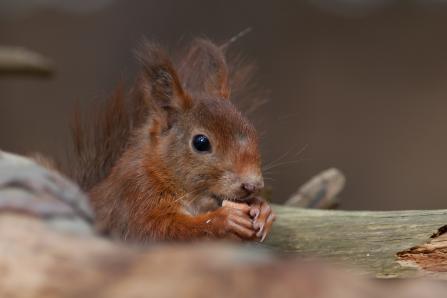
(c) Mike Snelle
During 2016, we worked with Liverpool John Moores University, alongside Dr Javier Del barco-Trillo and student Anna Starkley for her BSc. (Hons) in Zoology.
The research conducted investigated the effects of supplementary feeding on our population of red squirrels. Feeders were installed within a protected woodland free from grey squirrels, either containing food (full feeders) or no food (empty feeders), and squirrel abundance was recorded both before and after feeding was recorded at each feeder.
The findings are currently under review for publication.
Transmission dynamics and pathogenesis of squirrelpox in UK red and grey squirrels (2014)
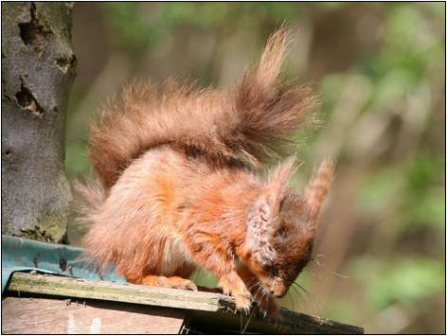
During 2014, we worked with The University of Liverpool alongside Julian Chantrey, a Veterinary Pathologist and Timothy Dale, a PhD student over three years. Their research involved increasing knowledge on the red squirrel survival rates after squirrel pox outbreaks and modes of transmission of the pox. This was vital information for the conservation of the species. The findings of this research can be downloaded below.
Are you a student?
If you're studying as an undergraduate, masters or doctorate student, please review the current open research questions we would like answering. With this opportunity to work as a co-research partner, we can offer an advisor and other reasonable support throughout. The following questions are based around applied conservation and would require research hypotheses devising.
- How much carbon is currently stored in the peatlands of the North West, and how much C02 would be released if this was lost?
- What is the most effective method for re-establishing sphagnum on cutover peat?
- What is the effect of transplanting sphagnum on the genetic viability of the sphagnum population at a site?
- What are the effects of gully/ditch blocking on the hydrology of a lowland raised bog?
- What concentration of methane is released from a 'typical' lowland raised bog in the North West during: a) peat cutting, b) cutover bare peat, c) recovering, and d) pristine condition?
- Are small scabious mining-bees present in Lancashire?
- What is the ecology of the cryptic species of white-tailed bumblebees?
If you'd be interested in conducting this research please get in touch here.

